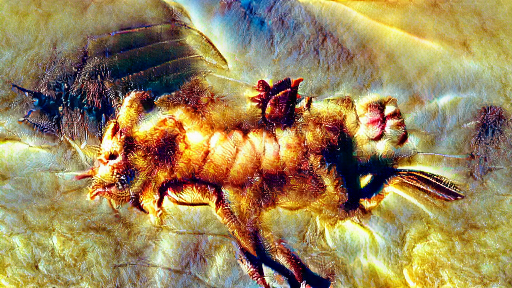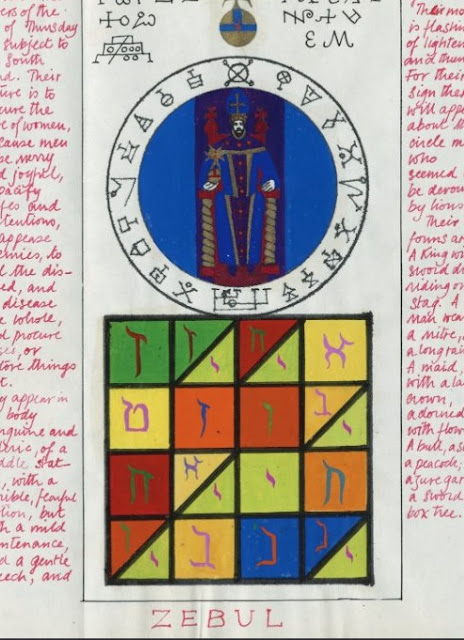Angels are etheric beings aligned with the axiomatic force of LAW. All angels hail from the Empyrean, which is a celestial demiplane that looks kind of like a birds-eye view of an infinite-petaled rose. When angels are not extant on earth or wandering the astral plane, their essence resides in the Empyrean along with the souls of lawful beings, though a small population live in the milk-white cities of the moon to oversee the lunar purgatory of the recently deceased.
According to the church, angels were created in order to interpret and propagate the emanations of Law from its hyperuronic realm to the prime material plane. Cosmic Law originates from a place of utter ideals, which emanate forth to the lower planes through various means (one of which being the religious practices of lawful mortals). Law stands in polar opposition to Chaos, which subsumes reality as opposed to emanating forth into it. Law vs. Chaos is not so much a conflict of "good" vs. "evil" as it is Apolaynian vs. Dionysian ideals, or preservation vs. transformation.
Angels operate on an entirely separate level of consciousness than mortals. When an angel conceives of a subject, everything there is to know about it springs into their mind. However, they never use the full breadth of information at their disposal to plan or strategize beyond what is necessary for the very next step. Not because they are incapable of doing so, but because it is wholly against their nature—scheming is for mortals and demons. Angels know no urge or impulse; each moment is evaluated with all available information, and each decision is made based off of what course of action will bring them closest to finishing their task, as ordained by the cosmic forces of Law. Angels are not infallible, yet when one falls they do so after having evaluated all courses of action with all available information. Thus, every angel who has ever fallen has done so willingly and with no regrets. Both angels and demons are spiritually oriented toward their respective alignment, but are still creatures that think and feel, that have personalities and the capacity to develop views and opinions. Fallen angels are also known as devils, and ascended demons are known as archons.
Most angels never consider whether or not they have free will. They see themselves as agents who from their inception were set on a track that spans eternally into the future. No angel claims to dream, but some have before. They dream of the after the utter end, beyond the conflict of cosmic forces, beyond when the last order of Law has been enacted, beyond the collapsing of the planes, beyond the death of all known and unknown things.
Every angel has the following features: Flight, resistance to spells like charm and sleep, invulnerability to mundane weapons, the ability to produce light (maximum radius equal to 10' x Type number), infravision, and magic resistance (Base 50%, increasing 5% with each type). Angels can speak and read every language (though only when the situation demands), are immune to disease and poison, and can detect invisible creatures.
Type I: Cherubim
It is more accurate to describe the cherubim as quasi-angels, but they’re often grouped with the rest of them. A cherub on its own is a single particle of angelic essence. A set amount of cherubim exist on the earth at any given time, in higher concentrations in areas oriented toward Law and nearly nonexistent in areas of Chaos. Cherubim in heavy concentrations can manifest as beams of light, spontaneous inspiration, bouts of virtuous fervor, or cryptic patterns encoded in the natural world.
Cherub particles can form a sort of ontolo-molecular bond with eachother, which creates a chain reaction that eventually forms a (celestial) sphere-shaped entity that is the common conception of a cherub: what appears to be a human toddler enveloped in a bubble of light. Once these entities are formed, they can think and speak for themselves just as any other angel. For all intents and purposes beyond those of exclusive concern to the more esoteric sects of the church, these sphere-creatures are what most people mean when they speak of cherubs. Cherubim can only maintain their collective form for brief periods of time.
HD: 1 AC: 3 Move: 140’ (flying) Morale: 9 Attack: Ray of light, 1 point of damage and hit creature must save vs. spells or lose the will to fight.
Cherubs remain for 1d6 rounds after they are first encountered. If a lawful cleric is in the party, the cherub will offer to grant a blessing in exchange for a suitable prayer. When the cleric prays to the cherub it will make a reaction roll, with a result of 9 or higher signifying that the blessing will be granted. The roll gets a +1 bonus for every other lawful PC that prays. Offerings like coins or wine will also grant appropriate bonuses. Only one roll is made per party.
Cherub boons
Fortune. The next treasure or coin horde the party acquires will be 10% more valuable (a 100 gp gemstone becomes a 110 gp gemstone, or a chest of 2000 cp instead would contain 2200 cp).
Allyship. The cherub will manifest and fight alongside the PCs the next time they are in combat.
Healing. Each party member restores 1d4+1 hit points.
Insight. The cleric can ask the cherub a single question about their current situation or the immediate surroundings, to which the cherub will offer an answer in the form of a cryptic clue. The more specific the question, the more definite the clue.
Comradery. The PCs' followers get +1 to their morale and loyalty scores.
Guardian Angel. The next time a PC would be reduced to 0 hit points or fails a save that would result in their death, they miraculously avoid the danger.
Type II: Malakim
Malakim serve as the messengers and general-purpose task executors of the Empyrean. They are often charged to convey mystical truths of Law, guard forbidden areas, ensure that cosmic duties are fulfilled, and offer guidance and direction in matters of the church. They don’t have a consistent form when manifesting in the prime material plane, instead adopting whatever appearance is best suited for the task—or at least, whatever appearance is best suited according to the inscrutable reasoning of angels. Usually they take the shape of shimmering humanoids, birds (typically swans or doves), floating flames, or talking statues.
HD: 4 AC: 3 Move: 140’ Morale: 9 Attack: 1d6 (touch, treat target’s AC as unarmored)
Malakim occasionally manifest with swords, but usually fight unarmed or with natural weapons appropriate to their form. The mechanics don’t change—a single touch can dislocate a joint, raise a bruise, or cause a muscle to spasm. Likewise, their touch can reverse all previous damage they caused an opponent. Malakim don’t typically fight to kill mortals, instead only engaging in combat if they would otherwise be prevented from fulfilling their duty.
Typical tasks of the Malakim
Accompany pilgrims through the Valley of Woe.
Protect the sacred texts hidden in an abandoned monastery.
Guard the entrance of a terrible dungeon to prevent mortals from meeting their doom.
Enlist “improbably destined” individuals for sacred missions when the usual heroes are occupied.
Protect a poor (though loose with its offerings) village from monsters and evil spirits.
Manifest in a great cathedral to help punctuate a particularly resonant sermon.
 |
| Source |
Type III: Seraphim
Angels of force, whose name means burning; seraphim are the primary warriors of the angelarchy. While the forces of Law and Chaos are currently locked in a cold war–style stalemate, seraphim are the elite units who get dispatched for special commando missions in the many cosmic proxy-wars such as the one happening on earth. They will only ever manifest in the prime material plane when necessary to carry out their mission or when they are petitioned to combat a direct threat to the church. A seraph’s body is completely covered in platinum armor intricately etched with sacred geometry, save for their blazing wings and head, which glow white-hot and are hard to look at. They sing a particular song in battle, which to mortal ears sounds like a thousand people all running their fingers around the mouths of wine glasses in a train tunnel with perfect acoustics.
HD: 8 AC: -1 Move: 240’ Morale: 12 Attack: Weapon (see below) x 2 and Wing Bursts or Brazen Exultation
Wing Bursts: Every creature in a 20’ radius must save vs. breath weapon or take 1d6 damage as the Seraph’s wings release bolts of fiery energy that rain down around them.
Brazen Exultation: The seraph brings their song to a sublime crescendo, releasing the pure celestial energy sealed within them. The effect functions as a fireball spell cast by an 12th-level MU centered on the seraph with a radius of 60'. The seraph can do this once per day, only in a moment of desperation.
Seraph weapons
Lightning sword +2. 1d8+2 damage. Bolts of lightning leap from the blade on a successful attack, causing enemies within 10’ of the target to save vs. spells or take 1d6 damage. Once per week, the sword can be raised toward the heavens to call forth a bolt of lightning anywhere within 240’, dealing 6d6 points of damage to creatures within 20’ of the bolt, save vs. spells for half.
Flaming lance +1. 1d10 damage, range 20’. Once per turn, the wielder can forgo attacking for one round to charge the lance. The next round, the lance can release a 60’ jet of flame that deals 3d8 damage to everything in its path, save vs. spells for half.
Radiant javelin +1. 1d6+1 damage, range 80’/160’/240’. Turns into a beam of light when thrown, returning to the thrower once it meets its destination. Can be thrown by either hand with equal ease.
Holy fists. 1d6 damage/2d6 against chaotic creatures. This isn't a weapon per se, some angels are just really fucking strong. Hit creatures get knocked back 10’ unless the attacker wishes otherwise.
In the event that a PC acquires a Seraph’s weapon, one of several things may happen. If the weapon was stolen, it turns to lead. If the weapon was won from the defeated seraph, it persists for one hour until it fades away. If the weapon was gifted to the PC to complete a task an angel is otherwise unable to do, it lasts until the PC completes their task, strays from their mission, or dies. If holy fists are granted, the PC gets glowy hands that shine when they form a fist.
Type IV: Principalities
Principalities are understood to be the celestial bureaucrats of the angelarchy, as well as arbiters of cosmic law, executors of justice, scribes to the whims of fate, and keepers of sacred knowledge. Principalities appear as pale statue-like beings with blank eyes and flowing robes. They always manifest together in a prime-numbered group standing atop a golden cloud, waving banners, playing musical instruments, and writing in their books and scrolls.
HD: 10 AC: 3 Move: 180’ Morale: 8 Attack: Pearlescent bow +1 (1d6) x 4
Non-lawful creatures struck by a principality's arrow must save vs. spells or their alignment becomes lawful for the next hour. This effect doesn’t work on demons, undead, or unaligned creatures.
A group of principalities always acts as one creature. If a third of their HP is depleted, they get three attacks per round. When two thirds of their HP is lost, the number of attacks drops to two. Principalities make a morale check each time they lose a third of their ranks. In place of an attack, a principality can do one of the following:
Horn. Calls forth a random angel of type I-IV (roll for type) (50% chance of success). This can be done twice per day.
Drum. The next attack against the principality is automatically deflected. Magic missiles and area-of-effect spells are unaffected.
Harp. The principality heals 1d8 hp. It cannot be brought above the nearest 1/3rd hp threshold.
Scroll. The principality reads a holy commandment from a scroll. Target lawful creature within earshot must save vs. wands or obey the command. Principalities issue simple, direct commands and never command the target to harm themselves. Typically, the target is commanded to subdue their allies and prevent them from fighting further.
Book. The principality drafts an esoteric record in their tome. Target creature must save vs. wands or is unable to repeat the same action for the next 1d4 rounds.
Type V: Galgalim
Galgalim are the Cthulhoid “biblically accurate” angels that everyone gets so hyped about. Burning wheels within wheels, countless wobbling eyes, wings that unfold in Escher-like patterns. The turning of their wheels and the chanting of their many mouths causes the ascended principle of cosmic Law to emanate throughout the universe. They bare a terrible significance in the workings of the planar cosmos, and their duties are so utterly incomprehensible to mortal minds they can only be approximated through direct revelation. Still, they are recognized and revered by the earthly forces of Law, and are honored as patrons to many churches and institutions. Whole libraries are filled with musty tomes of dense scripture devoted solely to recording and explaining the importance of their deeds, all of which are written in intricate word squares and ideograms characteristic of only the most esoteric of Lawful doctrine. Galgalim are the symbolic counterpart of the ancient chaos demons that turn mortal men insane merely by being made aware of their existence.
HD: 12 AC: 0 Move: 300’ (teleport) Morale: 10 Attack: 1d10 x 3 (in a manner that is most thematically appropriate, i.e. laser beams, columns of flame, locust plagues, etc.)
A galgal can call forth another angel of types I-IV twice per day. Once per day, it can cure any disease, neutralize any poison, remove any curse, restore a lost or crippled limb, or reverse any mutation or similar affliction. It can issue Quests (as per the spell) as many times as it wishes, with unwilling lawful creatures saving at a -4 penalty. The quests they give are arduous and require great sacrifice, such as destroying the hand of Vecna by affixing it to your arm and then dousing it in the stygian river of the Underworld.
Example Galgalim
Omael, The Revealer of the Mystic Secret
Nithael, The Keeper of the 12 keys
Urzophon, The Throne of Prophecy
Lecabel, The Herald of the Truth
Iezalel, The Engraver of the Flame
Loviah, Who Waits upon the Rock
Achaiah, The Singer of the Song of Songs
Elemiah, The Speaking Gate
Type VI: Hayyoth
Big, monstrous angelic kaiju. They are only sent to earth to usher in the end of one age and the beginning of a new one. Usually, if you see one it means that something has gone very, very wrong.
A hayyoth can only manifest in the prime material plane in an undeveloped fetal form. The longer it spends in the prime material, the stronger it grows. Its power grows fourfold over the first 44 days, and then another fourfol after the subsequent 44 weeks. This continues after 44 months, 44 years, 444 years, 4444 years, and so on.
If a hayyoth were to be sent to the world to enact an end-times scenario on a specific part of the world, it would first rest in orbit for about half a decade (the more it need destroy, the longer it rests; 44 weeks for a city, 44 years for most of the world, 444 years or longer for greater cosmic threats). Once 44 months, 44 weeks, and 44 days have passed, it will awaken at once (resting no longer than it needs to), shake the crystal concretions from its exoskeleton, and then thrust itself toward the earth. The impact alone would be big enough to impact the global climate for years to come. But before anyone has time to worry about that, it begins its rampage.
There is a single hayyoth that exists on earth. It was, presumably, the last one to come here, but for whatever reason it never returned to the Empyrean. It lies in the north pole, completely submerged under the ice. It is uncertain whether it is dead or just lying dormant.
HD: 1 (fetal form)/4/16/64/etc. AC: -2 Move: 150’ Attack: talons (3d10) x 4 and lightning (8d8) or Light of Judgement.
Lightning: bolts of energy constantly stream from the hayyoth’s body and rain down on the surrounding landscape. Each dice of damage for lightning can be applied to any target within 500’ before being rolled. No more than three dice can be applied to the same target. The target gets a save vs. breath for half damage.
Light of Judgement: The hayyoth spends a round focusing its energy, and then the next round releases it in a single, massive beam attack. Deals damage equal to its current HP (save vs. breath for half) in a line 10’ wide and one mile long. The hayyoth must then spend a round resting. Can be used once per hour.
Regeneration: The hayyoth regenerates 1d6 HP each round as long as it has an unobstructed view of the heavens.
Death: upon reaching 0 hp, the Hayyoth explodes into a massive pillar of energy that extends to the sky and obliterates everything within a half-mile radius. It leaves nothing behind save for 1d10 of its diamond eyes in smoldering impact craters. Each is the size of a boulder and worth 1d10x10,000 sp.
After a hayyoth touches down on earth and begins its rampage, a Biblical plague forewarns its coming in the surrounding regions. For a week or so leading up to its arrival, the local area will experience some end-of-days style catastrophes. You can borrow a plague straight from the good book, but here are some other ideas for Old Testament–style precipitation:
Gore
Skulls
Dust
Serpents
Bile
Daggers
Type VII: Archangels
Chief among the angels, rulers of the Empyrean, and speakers of the Law. Archangels, along with significant martyrs, saints, and prophets, can be considered minor deities in their own right. Archangels command the armies of Law in the eternal war against Chaos, though they are rarely at the forefront of the campaign. It is by the will of the archangels that the Empyrean exists, and if they were to be slain all angelkind and the souls of lawful creatures would be cast across the cosmos. It is only at the end of days, when the war has reached its culmination and the forces of Law and Chaos are gathered for the final battle, will the archangels rise from their thrones, raise their swords, and lead the remaining angels in the last cosmic conflict. So it is ordained.
Stat archangels however you would a lesser deity or godling. If you’re of the sort that feels like gods should transcend the need for stats, so be it. Otherwise, you can lift something cool from Deities and Demigods and call it a day.







































